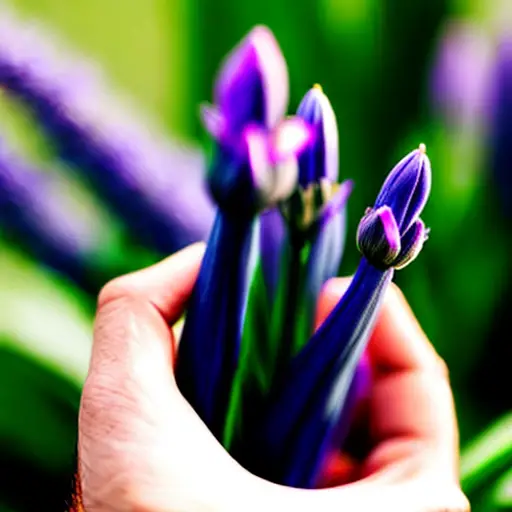Understanding the Basics of Lavender Care
Alright, fellow plant enthusiasts, let's dive into the whimsical world of lavender care! Now, we all know that lavender is like the diva of the garden, demanding attention and admiration. So, first things first, lavender loves the sun more than a sunbather on a tropical island. So, find a sunny spot for your lavender to bask in all day long. Next, don't be a water-hoarder, my friends. Lavender prefers a well-drained soil, so let it dry out a bit between watering sessions. And hey, don't forget to give your lavender a good haircut once in a while. Just like a fabulous hairstyle, a little trim will keep it looking fresh and fabulous. So, embrace your inner lavender whisperer and watch your plant thrive with grace and elegance!
Creating the Ideal Growing Environment for Lavender
An interesting fact about taking care of lavender plants is that they thrive in dry and well-drained soil. In fact, overwatering lavender can lead to root rot and ultimately kill the plant. Therefore, it is recommended to water lavender sparingly, allowing the soil to dry out between waterings. This unique characteristic makes lavender an ideal plant for xeriscaping, a landscaping technique that focuses on conserving water by using drought-tolerant plants.
Picture this: a lavender oasis, where the scent of relaxation fills the air and the vibrant purple blooms dance in the breeze. To create this dreamy growing environment for your lavender, start with a well-drained soil that's as fluffy as a cloud. Lavender doesn't like its feet to be constantly wet, so make sure the soil is loose and airy. Now, let's talk about location, my green-thumbed friends. Lavender craves sunlight like a beachgoer craves a tan, so find a spot where it can soak up at least six hours of sunshine a day. And don't forget about airflow! Lavender loves a gentle breeze, so give it some space to breathe and avoid overcrowding. With the perfect blend of sunshine, well-drained soil, and a touch of fresh air, your lavender will flourish and transport you to a serene garden paradise.
Essential Tips for Watering and Fertilizing Lavender

Let's talk about the two essentials for keeping your lavender happy and thriving: watering and fertilizing. When it comes to watering, remember that lavender is a bit of a drought-tolerant diva. It prefers to be on the drier side rather than constantly soaked. So, give it a good drink when the top inch of soil feels dry, but make sure not to drown it. Overwatering can lead to root rot and a sad lavender plant. Think of it as a delicate balance, like finding the perfect amount of milk for your morning coffee.
Now, let's move on to fertilizing. Lavender doesn't need a heavy dose of nutrients to flourish, but a little boost now and then can do wonders. When choosing a fertilizer, opt for a balanced, slow-release formula. This will provide a steady supply of nutrients over time, preventing any sudden growth spurts that could weaken the plant. Remember, moderation is key! Too much fertilizer can result in leggy growth and fewer blooms. So, follow the instructions on the package and resist the temptation to go overboard. Your lavender will thank you with a stunning display of fragrant blossoms.
When it comes to watering and fertilizing lavender, timing is everything. Watering in the morning allows the foliage to dry out during the day, reducing the risk of fungal diseases. Avoid watering in the evening, as the dampness can linger overnight and create a cozy environment for unwelcome guests like mildew. As for fertilizing, it's best to do it in early spring, just as new growth begins. This will give your lavender a boost before it enters its active growing season. And remember, always water your lavender before applying fertilizer to prevent any potential root burn.
In conclusion, mastering the art of watering and fertilizing lavender is all about finding the right balance. Give it a drink when the soil is dry, but don't drown it. Choose a balanced, slow-release fertilizer and apply it in moderation. Water in the morning and fertilize in early spring for optimal results. With these essential tips, your lavender will flourish, filling your garden with its delightful fragrance and adding a touch of elegance to your outdoor oasis.
Pruning and Harvesting Lavender for Optimal Growth and Health
A fun fact about taking care of lavender plants is that they actually thrive when neglected a little! Overwatering or excessive fertilizer can harm lavender, so it's best to let the soil dry out between waterings and avoid overfeeding them. So, if you tend to forget to water your plants or are a bit of a 'lazy' gardener, lavender might be the perfect plant for you!
Let's talk about the art of pruning and harvesting lavender, my fellow garden enthusiasts. Pruning is like giving your lavender a stylish haircut, keeping it in shape and promoting healthy growth. The best time to prune is in early spring, just as new growth starts to emerge. Be bold, but not too aggressive. Trim back about one-third of the plant, cutting just above a set of healthy leaves. This will encourage bushier growth and prevent your lavender from becoming woody and leggy. Now, when it comes to harvesting those fragrant blooms, timing is everything. Wait until the flowers have fully opened but haven't started to fade. Gently snip the stems just above a set of leaves, and voila! You've got yourself a bundle of aromatic lavender to enjoy or use in various delightful creations. So, grab those pruning shears and get ready to give your lavender some love and attention for optimal growth and health.

